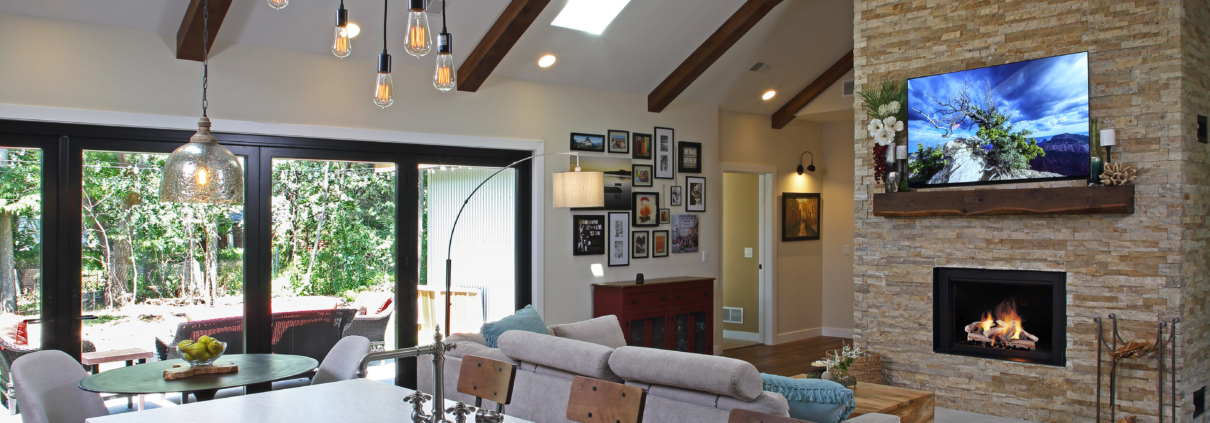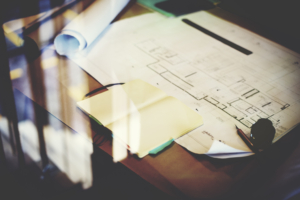Benefits of Working With a Design/Build Contractor vs a typical general contractor.
A design/build contractor is responsible for all facets of the design and construction process. For several reasons, many contractors do not design new custom homes, home additions, or remodeling projects for their clients. Many lack experience or training with drafting, design problem-solving, new product specification or building code compliance. Establishing a good plan with proper engineering requires time, experienced staff and accountability. Thee are elements a standard contractor may will, in many cases, struggle to provide.
Legal Advantages of Working With a Design/Build Contractor vs a typical general contractor.
Design/build contractors have expertise in all the areas mentioned above and are legally responsible for any issues. Many other contractors use lumberyard designers who have no insurance, design accountability, allegiance or legal accountability to you, the owner. They are not always accessible, either, as they are understandably busy selling lumber and servicing their own customers.
Independent architects and drafting technicians can provide better service but have similar time constraints. This can slow the production phase when challenges arise, and you will be charged for additional time. Both lumberyard designers and architects and draftsmen will place disclaimers on plans to avoid any liability for ‘unforeseeable problems.’ These are also disclaimed in the contractor’s contract, leaving you responsible for issues. A design/build contractor cannot legally disclaim errors they make on their plans.
Choosing a reputable, full-service design/build company over a typical contractor, should give you peace of mind knowing they are accountable for any potential plan & specification issues.
Cost Savings with a Design/Build Contractor vs a typical general contractor.
Hiring an independent architect or draftsman can be expensive. Most work on a percentage of the project fee. The result can easily exceed thousands of dollars. Furthermore, on new custom homes, home remodeling or extensive remodeling. Extra meetings, site visits and local building code research are typically charged hourly in excess of the base fee.
Furthermore, an independent designer/architect may specify items or processes with which a custom home builder is unfamiliar for which they have no existing material supplier. Seeing this, when the builder bids the project/plans, they will tack on a ‘safety margin’ to cover ‘unforeseeable items’ they don’t have experience with. The resulting extra costs to the owner can quickly add up and blow the budget on the project.
By partnering with a design/build contractor, you can save money and allocate those funds toward more important things. You want a design program to be transparent, convenient and easily understandable. You might also want one that maintains reasonable fees because design work is part of an effort to earn your trust and patronage. The design process is mutually beneficial as it helps the client and the design/build team to get to know one another and build trust. The idea is when it comes time to sign a contract, having a comfortable working relationship with your contractor will make your decision easier. In many cases, some or all design fees are credited to your contract price, meaning they are ultimately free of charge if you contract with that company. The costs are normally in place to cover their time if you decide to select a different company.
Convenience & Continuity with Design/Build
As you go through the design process, you and your design/build company, will develop an intimate understanding of the project, which is then seamlessly carried forth into production. The designer will normally be by your side throughout the project, at your convenience, at no additional cost.
When questions arise on-site, the production manager, lead carpenters, and trade partners will inquire directly with the designer and quickly get those answers to avoid delays.
A Design/Build company will help you develop your ideas into a set of preliminary construction drawings quickly and efficiently so the pricing process can begin. They take the take time to get to know you and your vision, carefully assess the lot or existing home and inquire about your project priorities, timeline, and budget before they begin. This initial information gathering helps to create a design that fulfills your expectations without exceeding your budget.




Leave a Reply
Want to join the discussion?Feel free to contribute!